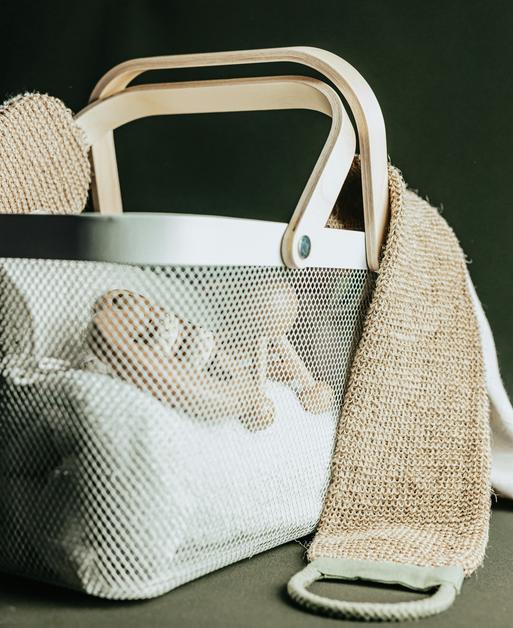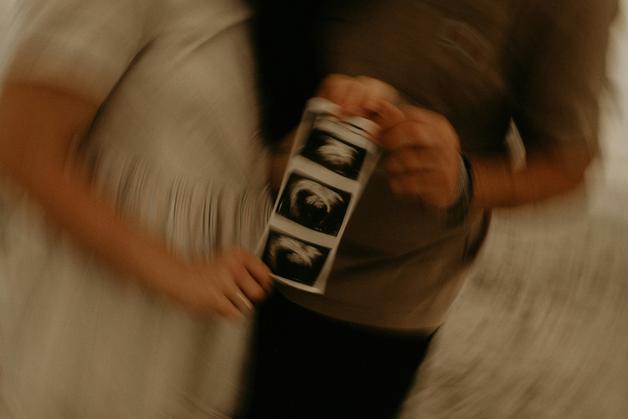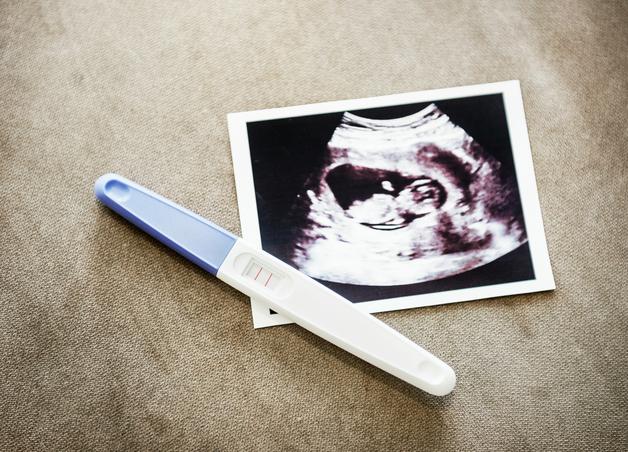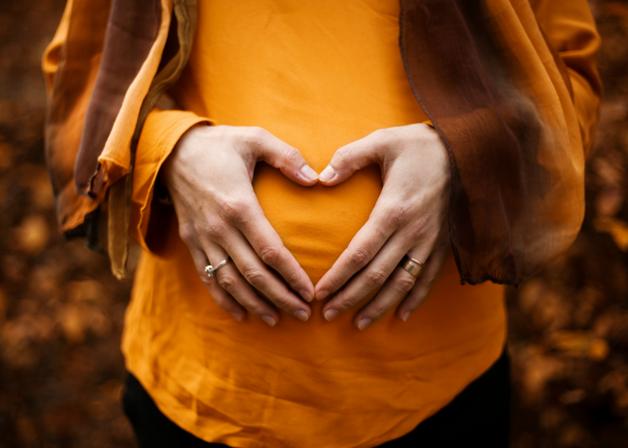You want less panic and more peace when labor begins, right? A clear hospital bag checklist does exactly that, it reduces last minute scrambling, centers your focus on meeting your baby, and keeps decision fatigue low when energy is precious. What should be packed, when should it be ready, and what is simply extra weight. You will find timing, smart organization, medically sound reasons for each category, and flexible options for planned birth, induction, unmedicated labor, VBAC, and C section. You will also see how to tailor a hospital bag checklist for a first baby or for twins, and how to avoid overpacking while still feeling prepared.
When to pack and where to keep it
Recommended timeline and triggers
Aim to start planning by the seventh month. Pack non essential items around 32 to 34 weeks, complete your main bag by 36 weeks for most pregnancies. If you have risk factors like prior preterm birth, multiples, IVF, hypertensive disorders, or a long drive, move the schedule earlier with your clinician’s guidance. For an induction or a scheduled C section, have everything ready a week ahead. Keep a simple note on your phone with your due date, insurance details, allergies, medications with doses, and a short prenatal summary.
You wonder whether it is too early at 30 weeks. It is not, early preparation is a safety net.
Storage and grab and go strategy
Use a two bag approach for less rummaging and more calm.
- A small labor grab bag for documents, chargers, lip balm, snacks, and comfort items.
- A main suitcase for the postpartum stay, ready to move once you reach your room.
Keep the grab bag in the car or with your support person, keep the main bag near the front door. Store documents in a waterproof pouch with a concise birth plan and emergency contacts. Tape a mini checklist inside the main bag and keep a duplicate on your phone. If you live far from the hospital, add layers and a small overnight kit for your partner or for older children.
Choose the right bag and organize it
Bag types and sizing
Choose a bag that suits your mobility and parking situation.
- Duffel or large tote for quick access.
- Rolling suitcase if you expect heavier items or a long walk from the lot.
- Backpack for hands free carrying.
- A diaper bag for baby items now and later, it remains useful well beyond discharge.
A practical setup looks like this, one medium main bag, one small labor grab bag, and a compact baby bag for the ride home. Label each bag with your phone number.
Organization systems and packing tips
Use labeled pouches for documents, labor, postpartum, baby, and tech. Add a waterproof pouch for damp items. Packing cubes or color coding keep everything easy to find, place liquids in zip bags to prevent spills. Keep high frequency items in an outer pocket, photo ID, long cord charger, lip balm.
Not sure where to put the peri bottle. Place it in the postpartum pouch so it appears when you actually need it.
Documents and practical essentials
- Photo ID and insurance card
- Hospital preregistration and any signed consents
- Birth preferences and emergency contacts
- Prenatal summaries, medication and allergy lists with doses
- Pediatrician contact card, also add pediatrician contact info in hospital bag
- A small amount of cash or coins for parking and vending
- Long cord cable, phone charger for hospital bag, and a power bank
- Reusable water bottle, pen, and a small notepad
- Car seat installed and ready, consider a photo of the final setup and keep the manual at hand
Why these matter medically. Accurate medication and allergy lists prevent adverse drug events, a long charger supports frequent updates to family without straining to reach outlets, and a properly installed car seat aligns with American Academy of Pediatrics guidance.
Labor comfort items for mom
Clothing and comfort
- Loose layers like an oversized T shirt or a roomy labor gown
- Lightweight robe for walking and privacy
- Non slip socks and slide on shoes
- Supportive nursing bra and nipple pads, include nursing bras and pads for hospital bag
- For C section recovery, high waisted or very low rise bottoms so fabric does not rub the incision
Why loose layers. During labor, body temperature fluctuates, oxytocin surges can bring waves of heat followed by chills. Easy layers let you adapt without hassle.
Comfort tools and relaxation
- Headphones and a soothing playlist or guided relaxation audio
- Eye mask and lip balm
- Handheld fan, hot or cold packs if allowed by your unit
- Massage tools and a birthing ball cover if using a hospital ball
- TENS unit if permitted, TENS means transcutaneous electrical nerve stimulation that can modulate pain signaling by stimulating nerve fibers
- Printed birth preferences, one page, easy to scan
Curious about TENS. It delivers low voltage impulses through skin electrodes that may reduce pain via gate control theory, which describes how non pain input can close the gates to pain input at the spinal cord level.
Delivery day and immediate postpartum items
Delivery day essentials
- Nursing friendly top and nursing bra
- Disposable or large reusable underwear
- Heavy flow maternity pads, bring your preferred brand if you like
- Peri bottle for gentle perineal rinsing, especially soothing after vaginal birth
- Front opening top for immediate skin to skin, which supports oxytocin release, infant thermoregulation, and early feeding behaviors
- For baby, hat, swaddle, and a simple going home outfit with a backup size
Why the heavy pads. Postpartum vaginal bleeding, called lochia, is normal as the uterine lining sheds and the placental site heals. It tapers over days to weeks. Large pads manage flow while allowing nursing staff to monitor output.
Postpartum recovery basics
- High waisted leggings or loose pants
- Mesh underwear and heavy pads if your unit does not supply them
- Perineal ice packs or chilled pads and witch hazel pads to reduce edema and discomfort
- Stool softener if advised, to limit straining that can aggravate perineal injury or hemorrhoids
- Small pillow for abdominal or perineal support during the car ride home
- Nipple cream and lactation support items for hospital bag like breast shells if you use them, plus contact details for lactation services
- Gentle mental health care, a short list of grounding exercises or a favorite relaxation app
Baby essentials
Clothing and care items
- Two or three onesies or kimono style tops
- Two sleepers
- One or two soft hats and socks
- Swaddles and a lightweight receiving blanket or a sleep sack
- Weather appropriate going home outfit in two sizes, newborn and zero to three months
Choose soft breathable fabrics, Oeko Tex certified cotton is a gentle option for newborn skin. Pre wash baby clothing with a mild detergent and remove tags to prevent irritation.
Feeding and safety
- Car seat installed properly, confirm fit of the harness at the collarbone level, chest clip at armpit height, no bulky coats under straps, think car seat for going home
- Pediatrician contact details for follow up
- If planning formula feeds, ask your hospital about bringing your preferred brand and bottle nipples
- A small pack of newborn diapers and wipes only if permitted by your unit
- Emery board for nails if you prefer smoothing rather than clipping in the early days
Newborn physiology in a sentence. Skin to skin supports glucose stability, early latch supports colostrum transfer which is rich in immunoglobulin A, and a safe seat ensures protected transport of a baby with immature neck musculature.
Partner and support person items
Practical support items
- Change of clothes and basic toiletries
- Snacks, a reusable water bottle, and a small pillow or travel blanket
- Comfortable shoes and a spare pair of socks
- Charger and small amounts of cash
- The sibling care plan and contact list if relevant
Support role items
- Charged phone or camera and a power bank
- Small cooler for perishable snacks
- A brief checklist of responsibilities, who to update, who manages pets or school pickup
- A copy of the birth preferences to help advocate respectfully
- Printed directions and parking information
Tech, chargers and practical extras
- Phone, tablet or e reader, earbuds, and long cord chargers
- Camera and extra storage if you plan to record moments
- Optional extension cord if outlets are limited
- Insulated bag for snacks
- Zip bags for wet clothes or soiled items
- Laundry bag
- Small flashlight
- Compact toiletry kit and dental care items
A quick note on infection control. Hospital hand hygiene is excellent, but your own unscented toiletries can reduce skin irritation, especially if you have eczema or fragrance sensitivities.
Cesarean specific items
Clothing and comfort for recovery
- High waisted or very low rise pants that sit away from the incision
- Abdominal binder if your surgeon recommends it, some patients find it supports mobility and cough
- Button front or open front tops for easy nursing and skin to skin
- Slipper socks and supportive walking shoes to encourage early mobility
Recovery aids and medication notes
- Printed pain plan and medication list for easy discussion with nursing staff
- Stool softener if advised
- Written wound care instructions, keep the dressing dry, watch for fever, spreading redness, increasing pain, or drainage with odor
- Ask about blood clot prevention strategies and early walking before discharge
- Add cesarean birth recovery items to pack to your personal list so nothing is missed
Why early mobilization. Walking improves lung expansion, reduces atelectasis risk, and supports venous return which lowers the chance of deep vein thrombosis.
VBAC and high risk considerations
- Prior operative notes and a focused birth plan for a trial of labor after cesarean
- Extra copies of medical summaries for staff
- Comfort tools for potentially longer labor, hydration and simple balanced snacks
- Share your plan during prenatal visits so the team knows your goals
- Keep a VBAC friendly packing list version of your plan
For high risk pregnancies, pack for a possible longer stay, additional clothing, medication summaries, specialist contacts, and a backup caregiver plan for home. Ask about transfer logistics in case a higher level facility is needed.
Water birth and physiologic birth variations
- Waterproof pouch for your phone
- Quick dry towel and an extra robe
- Swimwear if you prefer coverage in a birth pool
- Flip flops for wet floors
- Confirm unit policies on devices and any scents before you arrive
Considering unmedicated labor. Add a rebozo, massage tools, a focal object, and a non slip mat or disposable under pad if you might transfer from home. Avoid strong fragrances, they can be overwhelming to staff and to a newborn who relies on scent to orient at the breast.
Multiples and special baby needs
Packing for multiples
- Double clothing and swaddles
- Labeled name tags and multiple going home outfits
- Two nursing pillows or one larger pillow if that suits your feeding plan
- A simple feeding and diaper tracking sheet
NICU or special considerations
- A NICU notebook for updates and questions, rounds move quickly, notes help
- Specialist contact list
- Pump and cleaning supplies if inpatient pumps are limited
- Copies of prenatal testing
- A few small comfort items for baby’s bedside, a soft blanket or a family photo, confirm what your unit allows
- Parking plan and lodging if a longer stay is possible
- Keep a short list of NICU considerations in hospital bag so important items are not left behind
What not to pack and safety tips
- Valuables and excess jewelry
- Bulky styling tools and heavy makeup
- Large amounts of cash
- Unprescribed medications
- Extra paperwork that is not needed for admission
Safety checks worth doing. Confirm whether your unit allows TENS, photography, visitors, or aromatherapy. Ask what is provided, many units stock diapers, wipes, mesh briefs, peri bottles, and large pads. Verify car seat and discharge rules. Ask about food and drink rules for your support person.
Packing and organization strategies
Step by step packing plan
- Start lists early and involve your partner or a trusted helper
- Pre wash baby clothing and remove tags
- Label pouches by category, place liquids in sealed zip bags
- Create a labor grab bag for documents, chargers, lip balm, and snacks
- Install the car seat before your due date and take a clear photo of the final setup
Day of and pre departure checklist
- Add phone, wallet, keys, long chargers, power bank, and any refrigerated milk
- Place a printed checklist on top of the bag and tie a bright ribbon on the handle
- Send a text to your designated contact when you leave home
Printable checklists and sample scenarios
You want a one page reference. Create a printable hospital bag checklist for quick scanning, a minimalist version for a twenty four hour stay, a C section version with recovery items highlighted, and a multiples or NICU version that doubles quantities and adds pump supplies.
Sample scenarios to compare.
- Minimalist twenty four hour stay, documents, chargers, toiletries, simple outfit for mom, one outfit for baby, car seat
- Standard forty eight to seventy two hour stay, full postpartum basics for mom, a few baby outfits in two sizes, partner items, snacks
- Extended or NICU stay, pump and cleaning supplies, extra clothing, baby care extras, partner sleep kit
Hospital questions to ask before you pack
- Visitor rules and quiet hours
- Availability of breast pumps and lactation support
- Whether TENS and water labor or water birth are allowed
- What supplies are provided, pads, diapers, peri bottle
- Parking and entry logistics, including after hours access
- Whether car seat checks are offered on site, and who must sign discharge paperwork
- What you need for birth registration and insurance claims
- Any proof of car seat installation needed for going home
After delivery, items to keep ready
- Discharge paperwork and prescriptions
- Newborn appointment information
- Small first aid kit
- A blanket to place over car seat straps, never under
- Pump parts and your feeding plan within easy reach
- Extra underwear, recovery supplies, spare baby clothes, and compact entertainment for follow ups
- A small cash reserve for parking or vending
Seasonal and travel considerations
Winter asks for warm layers for you, hat and blanket for baby, never place bulky coats under car seat straps since compression during a crash can loosen the harness. Summer asks for breathable fabrics, a sun hat and shade during car transfers, and steady hydration. For international birth plans, carry passports, international insurance documents, voltage adapters for chargers, certified translations of prenatal records, and routes printed in case of poor signal.
Common packing mistakes and how to avoid them
Top missteps. Overpacking items the hospital already supplies, forgetting long chargers or a power bank, arriving without an installed car seat, leaving key documents at home, relying on memory.
Simple fixes. Use a printed hospital bag packing list and keep a copy on your phone. Confirm what your unit provides, pack lighter. Double check car seat installation. Label baby clothing by size. Do a practice walk with your loaded bag to see whether it feels manageable.
Key takeaways
- Use a base hospital bag checklist, then personalize it with clear categories, labor, postpartum, baby, tech.
- Pack early to reduce anxiety, finish by 36 weeks for most pregnancies, adjust earlier if advised by your clinician.
- Documents, long chargers, installed car seat, and breathable layers offer the most day one value.
- Keep baby gear simple and safe, proper harness fit and no bulky layers under straps.
- Bring recovery aids with proven benefit, large pads for lochia, cold packs for perineal swelling, binder and early walking after C section if appropriate.
- Print a one page list, keep a digital copy, and label pouches so a partner can find items fast.
There are supportive resources and professionals ready to help at every step, from lactation services to car seat technicians to your pediatric clinician and obstetric team. For personalized tips and free child health questionnaires, download the application Heloa.
Questions Parents Ask
What should I pack if I’ll be giving birth in the UK?
Hospitals in the UK (NHS trusts) often provide basics like maternity pads, some nappies, and clinical supplies, but policies vary between trusts and units. It’s helpful to:
- Confirm with your maternity unit what they supply and whether partners can stay overnight.
- Bring your maternity notes, photo ID, and any hospital paperwork.
- Pack a comfortable nightshirt or front‑opening top for skin‑to‑skin and feeding, a robe, slippers, toiletry kit, long phone charger, and any preferred brands (e.g., nipple cream, formula) if you have strong preferences.
- Have a properly installed car seat and a clear plan for parking or overnight travel if transfer or long waits are possible.
Rest assured: checking local policies ahead of time reduces stress and helps you pack only what’s needed.
Can I have a one‑page printable checklist — what are the absolute essentials?
Yes — a one‑page checklist is very useful for last‑minute grabs. Keep it short and grouped for quick scanning:
- Documents: photo ID, insurance/registration details, maternity notes, emergency contacts.
- Tech: long charger, power bank, phone, earbuds.
- Mum: comfortable top or nightshirt (front opening), nursing bra, heavy pads, mesh underwear, socks/slippers, lip balm, toothbrush.
- Baby: car seat (installed), going‑home outfit + backup size, hat, one swaddle.
- Labor grab: small pouch with snacks, water bottle, lip balm, comfort playlist/headphones, birth preferences copy.
- Partner/support: change of clothes, snacks, charger.
Fold this sheet into an outer pocket of your main bag so the essentials are visible at a glance.
What extra items should I pack if there’s a chance of early admission or a NICU stay?
If preterm birth or potential NICU admission is possible, add a few practical extras to reduce worry:
- Pump parts and manual pump (or confirm hospital pump availability), plus sterile storage bags if you plan to express.
- Spare chargers, extra layers, and several changes of clothes for a longer stay.
- A small notebook and pen to track rounds, questions, and feeding/log updates.
- Contact list for neonatal and maternal specialists, plus lodging/parking options for a longer stay.
- Comfort items for the support person (sleep kit, snacks) and a few family photos or a small blanket for baby’s bedside (check unit rules).
These items help you be prepared if the stay is longer or if baby needs additional care; communicating with your care team early helps tailor what to bring.
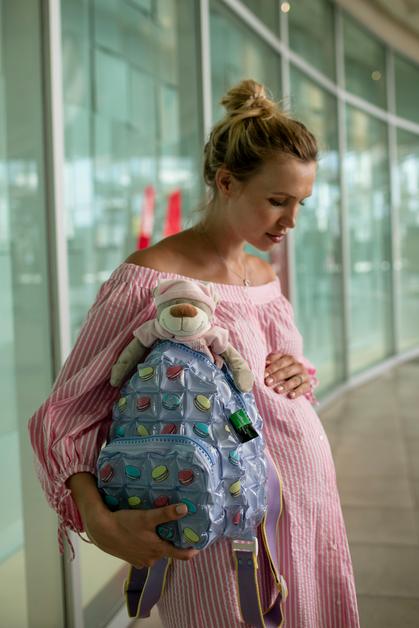
Further reading :

